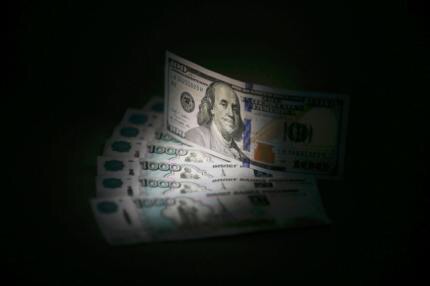By Jessica Menton -

The Dow Jones Industrial Average and the S&P 500 hit record highs in 2014, but Wall Street’s best and brightest mutual fund managers fell short and failed to keep pace, costing investors billions in missing gains—and fees. Passive funds that mirror popular indexes outpaced more expensive actively managed funds for the year.
Here’s what that means in real terms: If you had put $10,000 into the average mutual fund guided by a seasoned manager on Jan. 1, 2014, you’d have seen an average return of $1,148 for the year. As of the market’s close on Dec. 31, you’d have a total of $11,148, according to data from investment research firm Morningstar. That total doesn’t include the average 1 percent that would get subtracted in fees to, among other things, help pay the fund manager’s salary. In your case, that 1 percent would lop off about $111.48 from your annual return.
By comparison, if you had opted to put $10,000 in a passively-managed fund at the start of 2014, you would’ve realized an average return of $1,446, totaling $11,446—with fees as low as 0.2 percent owed, or $22.90.
Last year was nothing new. Actively managed funds are in the midst of a long losing streak that began in 2008. Not surprisingly, investment dollars are flowing strongly into passive funds.
“It’s been the worst five-year stretch ever for active managers relative to passive, certainly in terms of sales and how they’re perceived,” says John Rekenthaler, vice president of research at Morningstar. “Frankly, active managers really needed to have a good 2014 to reverse the market perception, but they didn’t. So now it’s twice the pressure on them for [2015].”
The average equity mutual fund holds more assets in smaller companies than the average index fund.
“Because actively managed funds are heavy in small companies and light in big caps, it was a bad climate in active funds [in 2014],” Rekenthaler says.
Financial market activity favored index funds last year because the largest stocks outperformed the smaller stocks. For example, the biggest of blue chips, such as tech giant Apple Inc., outperformed smaller companies. The general rule is that if the Russell 2000 -- index of 2,000 stocks from small market-cap companies -- beats the S&P 500’s gains, active managers do well, Rekenthaler says. “But if the S&P 500 beats the Russell 2000, U.S. stock fund managers look bad.”
He notes, however, the trend could reverse if the small cap stocks do well in 2015.
Index funds tend to be more tax-efficient, too. They also have lower expense ratios than actively managed funds because they generally trade less frequently. Even so, from 2009-2014 investors pumped more than $1 trillion into passively managed equity funds versus $363 billion into actively managed equity funds, according to Lipper’s 2014 Quick Guide to Open-End Fund Expenses.
Actively managed funds do have their appeal. Investors choose them because when the markets become volatile human managers can rearrange a fund’s holdings to give less weight to troubled companies and sectors.
The rise of exchange-traded funds (ETF) is making it more difficult for managed funds to attract investors. An ETF is a security that tracks an index, similar to an index fund, but trades like a stock on an exchange. Aye Soe, senior director, index research and design, at S&P Dow Jones Indices, says the ETF revolution going through a phase in which investors are moving away from traditional market cap-based indices and are instead looking to alternative strategies in search of more favorable returns and lower costs.
But with the U.S. Federal Reserve on course to hike interest rates in the middle of 2015, experts are now watching how active managers plan to add value when the rates finally rise and volatility returns to the financial markets.
“We’ll have to wait and see what the results from the Fed are next summer. Let’s see how many bond managers can correctly predict the interest rate path and manage risk," Soe said. “A lot of the story is yet to be seen.”
